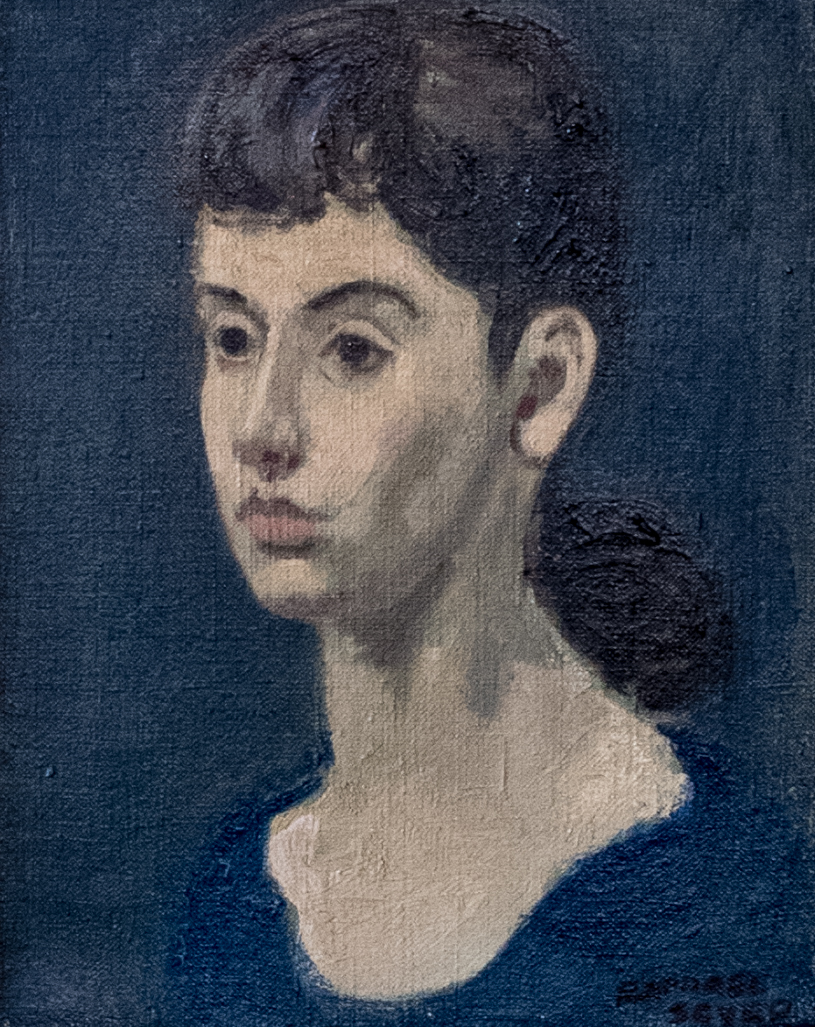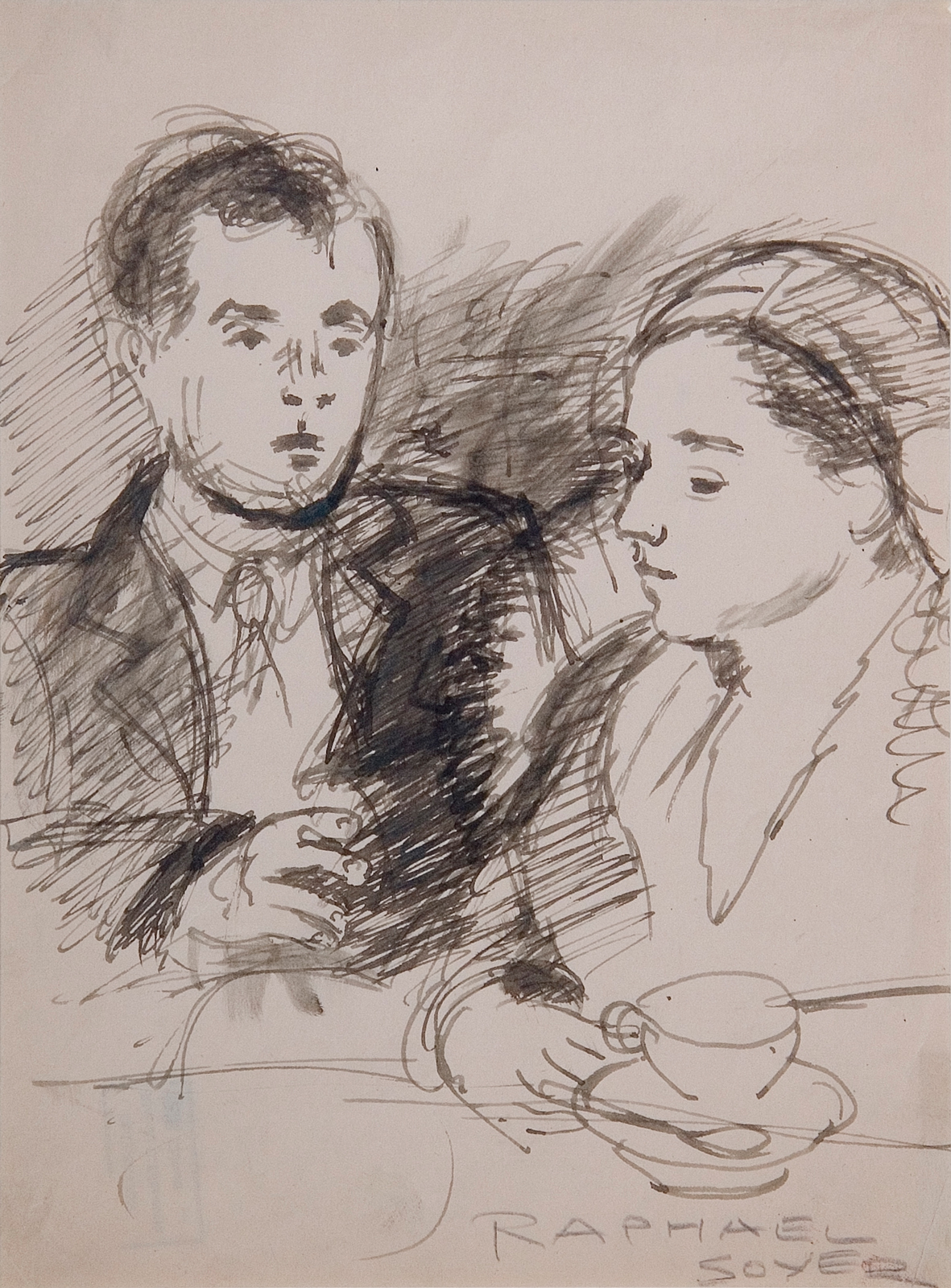Raphael Soyer
Raphael Soyer (1899-1987) was a social realist painter, printmaker, and lithographer whose work focused on working women, city scenes, and the downtrodden and disenfranchised. His artistic philosophy was one he held to for a lifetime: “If the art of painting is to survive, it must describe and express people, their lives and times. It must communicate.”
Born in 1899 in Borisoglebsk, Russia, Soyer was one of six children (including two siblings, his twin Moses and his younger brother Isaac, who would also become artists). His father, a Hebrew teacher and writer, held gatherings in their home to discuss culture and ideas; the local government didn’t approve, and the family was effectively exiled in 1912. In New York City, where the Soyers resettled, Raphael took free classes at Cooper Union and the National Academy of Design (where he studied alongside Ben Shahn) between 1915 and 1922.
In the years to follow, though, Soyer wrote: “I made a conscious effort to forget everything I had learned.” He took a break then took in New York with fresh eyes, making the people and urban scenes in his immediate surroundings his subjects. He depicted figures in natural, unglamorous poses — Degas was an inspiration — but even if the images were unflattering, Soyer was never cruel. Dancers, dressmakers, the unhoused, fellow artists, his parents, himself: all were observed with a warm intimacy, and imbued with introspection and individual character.
Soyer had his first one-man show in 1929 at the Daniel Gallery, and shortly after had several of his works accepted into the newly founded Whitney Museum; other major annuals and biennials — the Art Institute of Chicago, Pennsylvania Academy of Fine Arts — were quick to follow. Though his focus shifted over the decades, Soyer’s commitment to realism was steadfast. In the 1950s, Soyer banded together with likeminded artists including Edward Hopper, Reginald Marsh, and Jack Levine, to form Reality, an anti-abstraction, pro-realism art journal that caused a stir in the American art scene. A year prior to his death in 1987, when a friend inquired what he was working on, Soyer replied: “Painting disheveled girls, as usual.”

